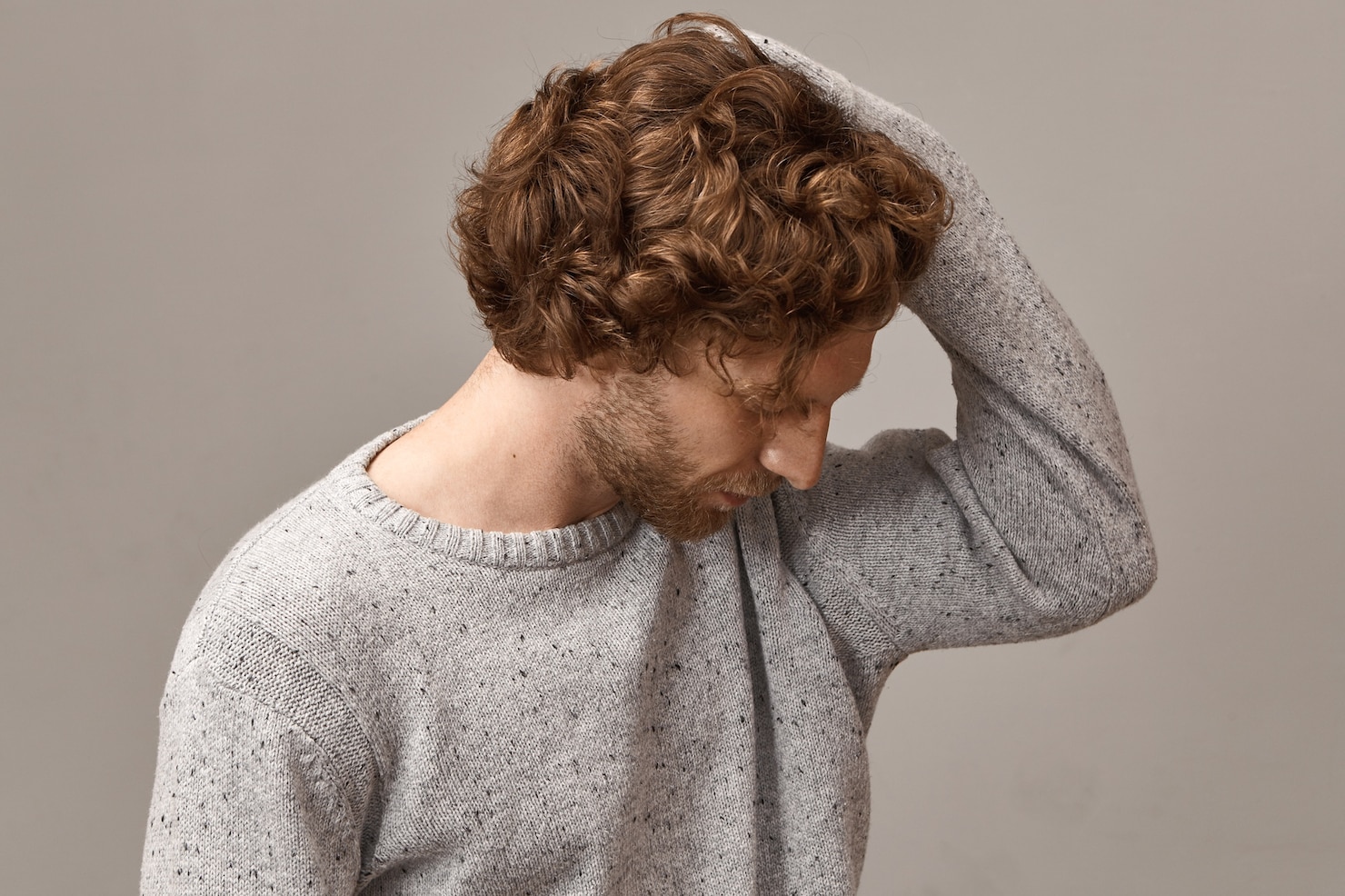
Are you tired of struggling with stubborn hair knots that seem impossible to untangle? Say goodbye to the frustration and embrace smooth, knot-free hair with our expert tips and techniques.
In this blog post, we will explore effective ways to untangle hair knots, providing you with the knowledge and tools you need for a hassle-free hair care routine. With this information, you no longer need to constantly search for terms like “how to get knots out of hair,” “knots in hair,” and “how to get knots out of hair home remedies.”
Get ready to bid farewell to knots as we delve into the world of effective hair knot solutions.
Understanding Hair Knots

Image Source: FreePik
Hair knots can be a persistent and frustrating problem, causing tangles and making hair care routines daunting. To effectively address this issue, it is crucial to delve into the science behind hair knots and identify the common causes that lead to their formation.
The Science Behind Hair Knots
Hair knots occur when individual strands intertwine and become tightly entangled with one another. They can also occur when hair sheds from the scalp. Falling hair can tangle with other hair strands and cause knots. Each strand of hair consists of three layers: the cuticle, cortex, and medulla. The cuticle, the outermost layer, is composed of overlapping cells that protect the inner layers. When the cuticle becomes damaged or raised, it creates rough surfaces along the hair shaft, making it more prone to tangling and knotting.
Additionally, various hair textures and types can influence the likelihood of knot formation. People with curly or oily hair tend to experience more knots due to the natural curl pattern and the increased likelihood of hair strands intertwining.
Common Causes of Hair Knots
Understanding the factors that contribute to hair knots can help us take proactive measures to prevent them. Some common causes include:
- Insufficient Moisture:
Dry hair lacks the necessary lubrication to glide smoothly against each other, increasing the chances of tangles and knots. Inadequate moisture can result from factors such as overwashing, exposure to harsh chemicals,heat styling, or environmental conditions.- Friction and Rubbing:
Everyday activities like vigorous brushing and scratching rubbing hair against rough surfaces, or using rough towels can cause hair strands to intertwine and form knots.- Sleep-Related Habits:
Resting your head on cotton pillowcases or failing to protect your hair during sleep can lead to friction and subsequent knotting.Key Takeaway:
Hair knots can be better managed and prevented by understanding the underlying science and common causes behind their formation. By addressing factors such as moisture levels, reducing friction, and adopting hair-protective habits, you can minimize the occurrence of knots and enjoy smoother, more manageable hair.Preventive Measures for Hair Knots

Image Source: FreePik
To keep hair knots at bay and maintain smooth, manageable locks, incorporating preventive measures into your hair care routine is essential. By establishing a proper hair care routine and embracing protective hairstyles, you can minimize the occurrence of knots and tangles.
Proper Hair Care Routine
Implementing a consistent and thorough hair care routine is vital for preventing knots. Here are some key steps to consider:
- Gentle Cleansing:
Use a mild, sulfate-free shampoo that effectively cleanses the hair without stripping away its natural oils. Focus on gently massaging the scalp and avoid rough handling or aggressive scrubbing.- Conditioning:
Regular conditioning is crucial to keep the hair moisturized, reducing the chances of dryness and tangles. Choose a nourishing conditioner suitable for your hair type and focus on the mid-lengths and ends. Do not apply conditioner on your scalp.- Detangling with Care:
Before combing or brushing your hair, apply a leave-in conditioner or detangling spray to ease out any knots gently. Start from the ends and work your way up, using a wide-toothed comb or a brush specifically designed for detangling.To prevent hair loss, brush or comb once your hair is almost or completely dry. However, if your hair gets tangled after a swim or washing, use a wide toothed comb on your wet hair just to restore order. Finger comb your hair first to prevent breakage.Get regular trims every 2 -3 months to get rid of split ends. Once your damaged hair is cut and removed, the shedding hair will not tangle with the rest of the hair, resulting in fewer knots.
Protective Hairstyles to Minimize Knots
Opting for protective hairstyles can significantly reduce the likelihood of hair knots, especially for those with longer hair. Consider the following styles:
- Braids:
Braiding your hair helps to keep individual strands contained and prevents excessive movement, reducing the chances of tangles and knots. Choose loose and gentle braids that won't strain or pull on the hair. You can braid your hair loosely before going to bed too.- Updos and Buns:
Pulling your hair back into an updo or a bun helps to keep it secure and minimizes friction between strands. Avoid tight hairstyles that can create tension and lead to knots.- Satin or Silk Scarves and Pillowcases:
Sleeping on a satin or silk pillowcase or wrapping your hair with a satin or silk scarf creates a smooth surface that reduces friction, preventing tangles and knots.Key Takeaway:
Preventing hair knots requires establishing a proper hair care routine that includes gentle cleansing, conditioning, and careful detangling. Additionally, incorporating protective hairstyles and using satin or silk accessories can help minimize friction and keep your hair knot-free. Remember, consistency is key to maintaining healthy, tangle-free hair.Untangling Techniques for Hair Knots
When faced with stubborn hair knots, employing the right techniques can make all the difference. By using the appropriate tools and products and following a step-by-step guide, you can effectively untangle those pesky knots and restore your hair's smoothness and manageability.
Using the Right Tools and Products
Having the right tools and products at hand is crucial for successful knot removal. Consider the following:
Wide-Toothed Comb or Detangling Brush:
A wide-toothed comb or a detangling brush with flexible bristles is your go-to tool for gently working through knots. Work in small sections. Start from the ends of your hair and gradually work your way up, using short, gentle strokes to avoid causing further tangles or breakage.Leave-In Conditioner or Detangling Spray:
Applying a leave-in conditioner or a detangling spray to the knots can help soften them and make them easier to untangle. Choose a product that provides slip and moisture without weighing your hair down.
Step-by-Step Guide to Untangling Hair Knots
Follow this step-by-step guide to effectively untangle hair knots:
Separate and Isolate the Knot: Identify the area where the knot is located and gently separate it from the rest of your hair. This will prevent further tangling as you work on the knot. Always work in small sections of hair.
Apply a Detangling Product: Spritz a leave-in conditioner or detangling spray onto the knot, focusing on saturating the tangled area. Allow the product to penetrate and soften the knot for a few minutes.
Start Untangling from the Bottom: Using your wide-toothed comb or detangling brush, begin untangling the knot from the bottom. Work in small sections and gently comb through the tangled strands, exerting minimal force to avoid causing hair breakage.
Use a needle or a safety pin on tough knots - if you cannot loosen the knot with a comb, insert a needle or a safety pin into the center of the knot. Loosen the knot by moving it around. Do not pull or break the hair along with the knot. Work patiently. If you still fail to remove the stubborn knot, you can trim it off with a sharp scissor as a last resort. Remove as much hair from the knot as possible and try to work the knot down towards the ends of hair to minimize the amount of hair you are trimming.
Key Takeaway:
Untangling hair knots requires the right tools, such as a wide-toothed comb or a detangling brush, along with the use of a leave-in conditioner or detangling spray. By following a step-by-step guide and approaching the knots with patience and care, you can successfully remove knots and restore your hair's smoothness. Remember to work from the bottom up and be gentle to avoid causing further damage.Products to Consider for Hair Knots
When it comes to effectively managing hair knots, having the right products in your arsenal can make a significant difference. Consider incorporating the following products into your hair care routine to help prevent and tackle knots, particularly if you have knot-prone hair.
Gentle Detangling Sprays and Conditioners
Look for detangling sprays and conditioners specifically formulated to ease the untangling process while nourishing your hair. These products often contain ingredients that provide slip and moisture, making it easier to work through knots without causing excessive breakage or damage. Opt for formulas that are lightweight and don't weigh your hair down, allowing for easy application and quick absorption.
Nourishing Hair Masks for Knot-Prone Hair
Hair masks are intensive treatments that deeply nourish and condition your hair. For knot-prone hair, choose masks that focus on providing moisture and hydration, as dry hair is more susceptible to tangling and knot formation. Look for masks enriched with natural oils, such as argan oil or coconut oil, as they help to soften and smoothen your strands, making them more manageable and less prone to knotting.
Oil your hair regularly with coconut oil or almond oil as a hair care routine, to keep it moisturized.
Key Takeaway:
To combat hair knots effectively, incorporate gentle detangling sprays and conditioners into your routine. These products provide slip and moisture, making it easier to work through knots without causing damage. Additionally, nourishing hair masks can help keep your hair hydrated and less prone to tangling. Choose masks that focus on moisture and contain natural oils to soften and smooth your strands. By using these targeted products, you can effectively manage hair knots and maintain smoother, more manageable hair.Conclusion
Dealing with hair knots doesn't have to be a daily struggle. By understanding the science behind hair knots and implementing preventive measures, such as following a proper hair care routine and opting for protective hairstyles, you can significantly minimize the occurrence of knots. Additionally, utilizing the right tools and products, such as wide-toothed combs, detangling brushes, gentle sprays, and nourishing hair masks, can help you effectively untangle knots when they do appear.
Remember, patience and gentleness are key when dealing with knots. Take your time, work through the knots from the bottom up, and avoid excessive force that could lead to breakage. By following these techniques and incorporating the suggested products into your routine, you can maintain smoother, more manageable hair and bid farewell to those stubborn knots.
